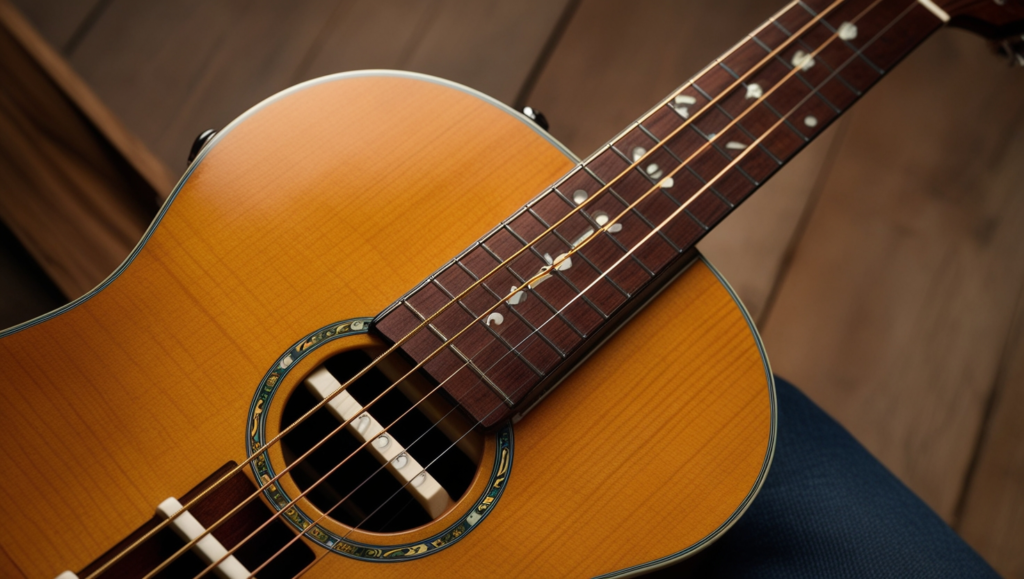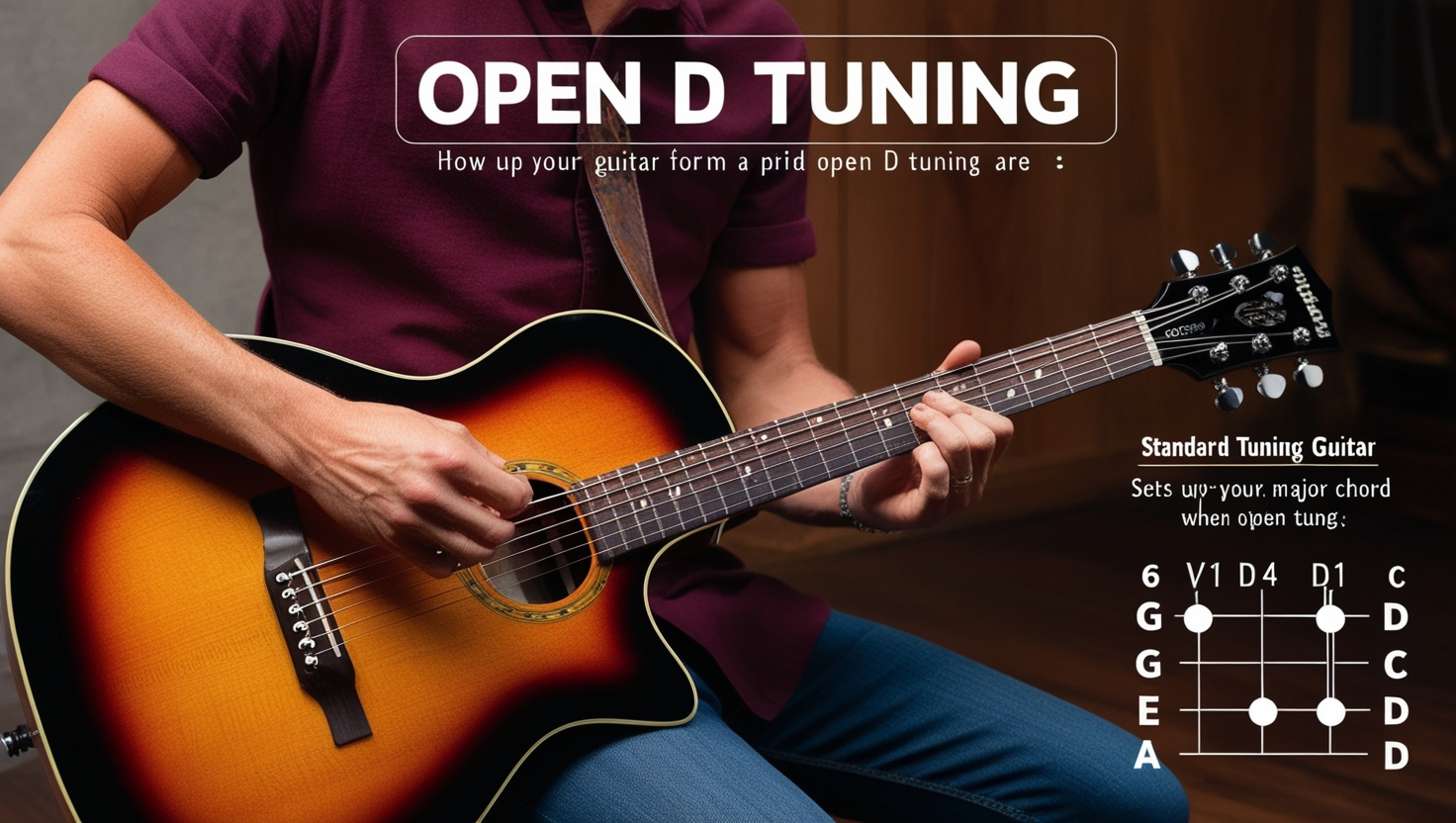Introduction to Open D Tuning Guitar
Open D tuning is a popular alternative guitar tuning that offers a rich and resonant sound perfect for blues, folk, and slide guitar playing. Unlike the standard tuning, an open D tuning guitar sets the strings to form a D major chord when played open. This tuning simplifies chord shapes and provides a unique tonal quality that can inspire creativity in your playing. In this article, we’ll explore how to set up your guitar for open D tuning, explore its benefits, and provide tips for mastering this versatile tuning.
Setting Up Your Guitar for Open D Tuning
Tune each string to the desired pitch to set up your guitar for open D tuning. The standard tuning (EADGBE) needs to be adjusted as follows: the sixth string is tuned down from E to D, the fifth string remains at A, the fourth string stays at D, the third string is lowered from G to F#, the second string drops from B to A, and the first string is tuned down from E to D. This configuration creates a D major chord when strummed open. Using a reliable tuner to ensure accuracy is crucial, as even slight deviations can affect the overall sound.
Benefits of Open D Tuning Guitar
One of the primary benefits of using an open D tuning guitar is the ease of playing major chords. With the strings forming a D major chord, you can simply strum all the strings to produce a harmonious sound. This tuning also facilitates slide guitar techniques, as you can slide a single bar or bottleneck up and down the fretboard to create smooth, gliding transitions between chords. Additionally, open D tuning enhances the resonance and sustain of your guitar, making it ideal for genres that require a rich, full-bodied sound.
Chord Shapes and Progressions
In open D tuning guitar, many chord shapes are simplified compared to standard tuning. For example, you can place your index finger across the fifth fret to play a G major chord. To play an A major chord, slide the same shape up to the seventh fret. Minor chords are also easier to form; for instance, placing your finger across the third fret creates a B minor chord. Experimenting with these shapes and their variations can lead to discovering new sounds and progressions unique to this tuning.
Exploring Slide Guitar Techniques
Slide guitar is a technique that shines in open D tuning guitar. The open tuning allows you to use a slide to create seamless, expressive transitions between notes. To get started, place a slide on your ring or pinky finger and gently press it against the strings without pressing down too hard, as this will produce a clean, buzzing-free tone. Practice sliding between frets to create smooth legato phrases and experiment with vibrato to add depth and emotion to your playing.
Popular Songs in Open D Tuning Guitar
Many iconic songs have been composed using open D tuning guitar. Artists like Joni Mitchell, Neil Young, and Robert Johnson have utilized this tuning to create memorable tracks. Songs like “Big Yellow Taxi” by Joni Mitchell and “The Needle and the Damage Done” by Neil Young showcase the distinctive sound that Open D tuning offers. Learning these songs can provide insight into the creative possibilities of this tuning and inspire you to create your compositions.

Tips for Maintaining Tuning Stability
One challenge of using an open D tuning guitar is maintaining tuning stability. The lower tension on some strings can cause them to go out of tune more quickly. To combat this, consider using slightly heavier gauge strings, which better handle the lower tension. Regularly check your tuning before and during practice sessions to ensure consistent sound quality. Adequately stretching your strings after tuning can also help maintain stability.
Adapting Your Playing Style
Open D tuning guitar may require adapting your playing style, especially if you’re accustomed to standard tuning. Fingerpicking patterns might need to be adjusted to accommodate the different string pitches, and specific chord shapes will feel different under your fingers. Take the time to explore these changes and incorporate them into your playing. Embrace the new techniques and sounds that Open D tuning offers, and let it influence your musical expression.
Recording with Open D Tuning Guitar
Recording with an open D tuning guitar can add a unique dimension to your music. The tuning’s natural resonance and sustain can enhance the depth and richness of your recordings. When recording, pay attention to microphone placement to capture the entire tonal spectrum of your guitar. Experiment with different mic techniques, such as using a combination of close-miking and room mics, to achieve a balanced and dynamic sound. The distinct character of open D tuning can make your recordings stand out.
Conclusion: Embracing the Versatility of Open D Tuning Guitar
Open D tuning guitar offers a world of creative possibilities for guitarists. Its unique sound, simplified chord shapes, and suitability for slide guitar make it a valuable tool for expanding your musical repertoire. By mastering this tuning, you can unlock new avenues for expression and add a distinctive flavor to your playing. Whether you are a seasoned guitarist or a beginner, open D tuning can inspire you to explore new musical horizons and elevate your artistry. Embrace the versatility of open D tuning guitar and let it transform your musical journey.







